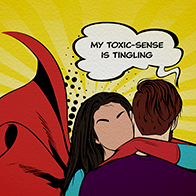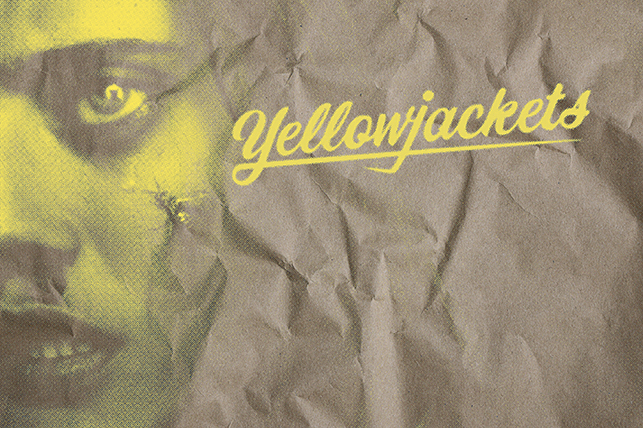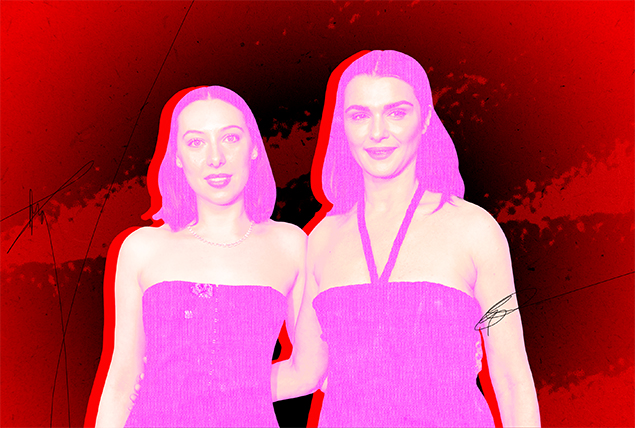Relationship Experts Examine Toxic Love in 'Daisy Jones and The Six'

Amazon Prime's "Daisy Jones and The Six" has become an instant streaming hit. The addictive musical drama, based on Taylor Jenkins Reid's novel of the same name, was inspired by the public relationship meltdown between Fleetwood Mac's Stevie Nicks and Lindsey Buckingham.
It's a stylish, headfirst dive into the glamorous yet seedy world of the 1970s music scene from co-showrunner Scott Neustadter. Yet, it's also a look at what can only be called a toxic relationship.
The backstory of 'Daisy Jones and The Six'
As a sort of musical soap opera, the show has big names behind the music choices. Los Angeles producer and musician Blake Mills worked with real-life songwriters to get the sound right.
Phoebe Bridgers, Jackson Browne and Marcus Mumford helped write the music for The Six rock band. The actors perform the songs.
Daisy Jones (Riley Keough), loosely inspired by Stevie Nicks, is a hedonistic, charismatic lead singer who joins The Six, a rock 'n' roll band headed by Billy Dunne (Sam Claflin).
Artistically and emotionally, the two are a dangerous yet thrilling pair. They collide in an explosion of inspiration and passion. Billy, a recovered drug and alcohol user, is married to Camila (Camila Morrone).
Relationship problems in The Six
Despite Billy's love for his family, he instantly recognizes a kindred spirit in Daisy. It's a tantalizing and potentially dangerous spark of connection.
Fans have found themselves fiercely divided into two camps: team Camila or team Daisy. But while there is a lot to love about both pairings, neither is a healthy relationship model.
The show features a few other romantic pairings among band members.
Keyboardist Karen Sirko (Suki Waterhouse) and lead guitarist Graham Dunne (Will Harrison) are the seemingly perfect couple who fall apart when the real world works its way into their relationship. Simone (Nabiyah Be) and Bernie (Ayesha Harris) are a healthy couple whose relationship is tainted by the homophobia and racism of 1970s society.
Just like in the real world, the relationships in "Daisy Jones and The Six" are messy, complicated and filled with difficult moral decisions.
We spoke to relationship experts to break down what's really going on in all of the fascinating relationships on the show—and what they can teach us about our own relationships.
Billy, Camila and Daisy
The main focus of the show is the spark between Billy and Daisy. Despite being an artistic match made in heaven, their personal relationship is complicated. Billy is married to Camila.
Daisy represents temptation and danger. She lives a life defined by excess. She drinks, uses drugs and parties into the early morning. Billy, on the other hand, is a recovered addict, trying desperately to live life on the straight and narrow.
Billy's relationships are, in many ways, defined by his past, according to Beverly Hills, California-based relationship coach Orna Walters.
"What drives him in his marriage [and his rejection of Daisy] is to not be like his father, who left," Walters said. "If he didn’t have this demon to fight, he wouldn’t have an issue with leaving Camila."
"We all learn about love in our family of origin, whether we desire to be like our parents, or like Billy trying to be the opposite. Either way, early childhood programming about love is still the driving force for one’s strategies in love."
Similarly, Daisy's past influences her relationship with love.
"Daisy’s demons come from her relationship with her mother. Rejection means her mother is right—that she is unlovable. Daisy believes if she can win Billy’s love then she’ll prove her mother is wrong," Walters said.
"I think the back story of Daisy, who had parents who neglected her, and Billy and Graham, who had a father who is not in their life, is important here," said Lyndsey Murray, L.P.C., an AASECT-certified sex therapist and the lead therapist at Relationship Matters Therapy in Hurst, Texas. "The attachment we have with our parents impacts who we become as partners in our adult relationships, and then when you add on substances like drugs and alcohol, it really complicates things."
Despite this, Murray appreciates Billy and Camila's relationship.
"It was nice to see him get clean, and I also thought his relationship with Camila was rooted in love and care," she said. "Even when Daisy kissed him and had feelings for him, he still chose Camila and loved her and his daughter."
His relationship with Camila highlights the inequalities that can arise in relationships, even today, according to Walters.
"When The Six make their first record, Camila is more than Billy’s girlfriend. She’s his muse and she’s a muse for the whole band," she said.
"Despite Billy and Camila’s relationship being set in the '70s, it still shows the struggles women face when they choose to raise a family over their own career ambitions. Camila is clearly a talented photographer who has put her career on the back burner for Billy. Her main strategy for love is to go into sacrifice," Walters said.
As for Daisy and Billy, their relationship has plenty of toxicity built in from the start.
"Creatively they are drawn to each other, but their egos are so big they are also threatened by each other. Neither wants to admit that the music they write together is better than anything they could do on their own," Walters said. "This push-pull dynamic and their passion for music creates a connection that is no match for anyone else. Also, their big ambitions bond them together as much as drive a wedge between them."
Murray noted that Daisy may be exhibiting signs of avoidant attachment, which occurs when someone avoids intimacy and getting too close to anyone.
"Daisy probably has an avoidant attachment from how her parents treated her and the experience she had at the hotel with a man when she was 15. The show insinuates there was sexual abuse here," Murray said.
Substance use, she added, is a way many people numb any true emotional vulnerability, which can make it easier to end up in toxic relationships.
"I think about Hank and then Nicky, who encouraged her drug use," Murray said.
Karen and Graham
Karen and Graham are an example of a workplace relationship gone wrong.
"Where workplace relationships can go awry is when there is conflict in the relationship," Walters said. "If you don’t have the tools to repair quickly, you can bring your disagreement into the workplace. There is also a strong need to keep the relationship secret, which can increase the excitement but gets in the way of the relationship moving forward."
The pair fall for each other while recording "Aurora," but despite their loving relationship, they ultimately part ways because they have different plans for their future.
"It’s appropriate for them to part since they don’t want the same things. Strong feelings and powerful attraction are not enough for a relationship to last long-term," Walters said. "It’s best for Karen and Graham to go their separate ways."
Simone and Bernie
And then there's Simone and Bernie, a couple who love and support each other—but are almost torn apart by societal pressures.
Not every relationship on the show is a bad one.
"Simone and Bernie have the healthiest relationship on the show," Walters said. "They support each other, express their feelings honestly, and create a safe space for emotional intimacy and vulnerability. We see the strength of their love when Simone tells Bernie she’s going to Daisy in Greece and Bernie replies by packing a suitcase, telling her she’s not going alone.
"When we truly love someone, we support their choices rather than judge them."
It's a surprisingly supportive gesture compared to the rest of the relationship drama.
The bottom line
Very few characters from the fictional band The Six make for decent relationship models. Still, it's not all bleak. As with any relationship, there are some moments of pure joy and fun.
Unfortunately, in the case of "Daisy Jones and The Six," we won't get to keep following along. This TV miniseries has a run of just 10 episodes.




















